As the infamous softcore cinema line celebrates its 50th anniversary, we dive into its strange world of serious, stylish sex stories
Desperate times call for desperate measures – and, in the 60s, with the popularity of home television causing havoc on cinema box office sales, Japan’s major film studios were going bankrupt like there was no tomorrow. For the country’s oldest production house, Nikkatsu – responsible for films like 1956 Academy Award nominee The Burmese Harp and 1967 crime classic Branded to Kill – there was only one way to curb catastrophe: get your clothes off. And with that, the studio’s now-infamous softcore cinema line, dubbed ‘Roman Porno’, was born in 1971.
The idea was straightforward: since the erotic ‘pink’ films screening in adults-only theatres were the only ones still making money, Nikkatsu would focus their resources towards the production of quality film media that could also entice salarymen into theatres with the promise of nudity and naughtiness. The title ‘Roman Porno’ was an amalgam of the words ‘romantic’ and ‘pornography’ – or, perhaps, a spin on the term “roman pornographique”, then used to reference French erotic literature – with the loose connotations of class helping to elevate what might otherwise be considered smut.
This was an entirely new genre that fit somewhere in the nether regions between narrative cinema and ‘pink’ films, and emerging filmmakers were all for it. Since the only requisite was that a nude scene should appear roughly every ten minutes, artistic freedom was all but guaranteed – resulting in “something more avant-garde, unique and free than regular movies”, says contemporary filmmaker Daigo Matsui.
With skilled crews, generous budgets, high production values and distribution to studio-owned high street theatre chains guaranteed, Nikkatsu’s gambit was a resounding success from the get-go. By the time of Roman Porno’s climax and withdrawal in 1988, roughly 850 features had been produced, spanning everything from screwball comedies and slashers to kinky nunsploitation flicks. It also launched the careers of countless critically and commercially-acclaimed filmmakers.
As Matsui’s new film Hand, produced to mark the 50th anniversary of the genre, tours cities all across the UK this month as part of the Japan Foundation Touring Film Programme, we decided to dive into one of the most unique filmmaking genres ever to come out of Japan. Read on to discover a strange world of serious, stylish sex stories – and think twice before watching them with your parents.
ICHIJŌ’S WET LUST (TATSUMI KUMASHIRO, 1972)
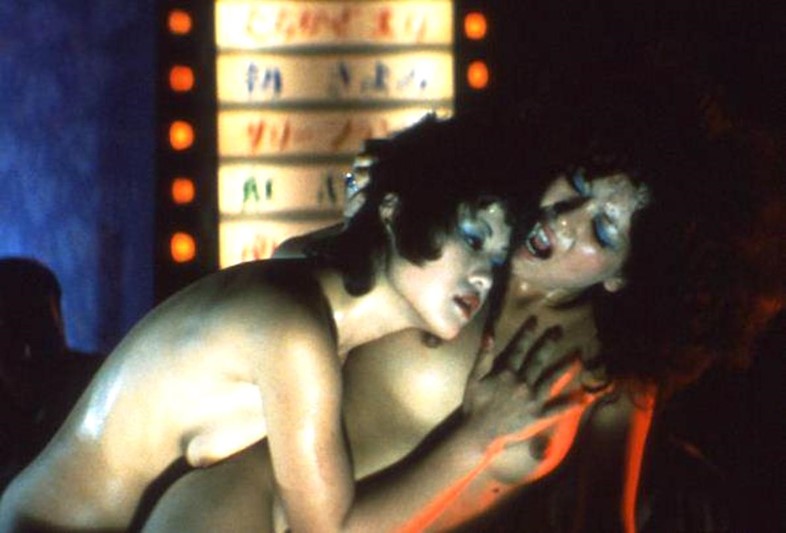
Though Roman Porno titles were designed to titillate, their creators often identified as serious filmmakers, so form and narrative were given surprising emphasis. Indeed, one early success was a film that wouldn’t feel out of place alongside the popular crime movies Nikkatsu was producing elsewhere – the difference being that the action in Ichijō’s Wet Lust is provided by naked flesh and strippers instead of guns and gangsters.
Starring famous stripper Sayuri Ichijō – whose real-life boundary-pushing performances saw her prosecuted for public obscenity – this stylish work tells the story of two sex show performers. Ichijō would play herself, while Roman Porno ‘queen’ Kazuko Shirakawa – who had led the brand’s launch title Apartment Wife: Affair in the Afternoon in 1971, and who would star in prestigious arthouse films by Hirokazu Kore-eda and Naomi Kawase in her later career – was among the supporting cast.
Boasting colourful fashions, giant rotating beds, dripping candle wax and psychedelic lighting, Ichijō’s Wet Lust would be a box office smash. It would also court significant acclaim from leading film criticism magazine Kinema Junpo, who gave it a trio of awards in 1972, and later voted it the 31st best Japanese film of the 20th century.
THE WATCHER IN THE ATTIC (NOBORU TANAKA, 1976)
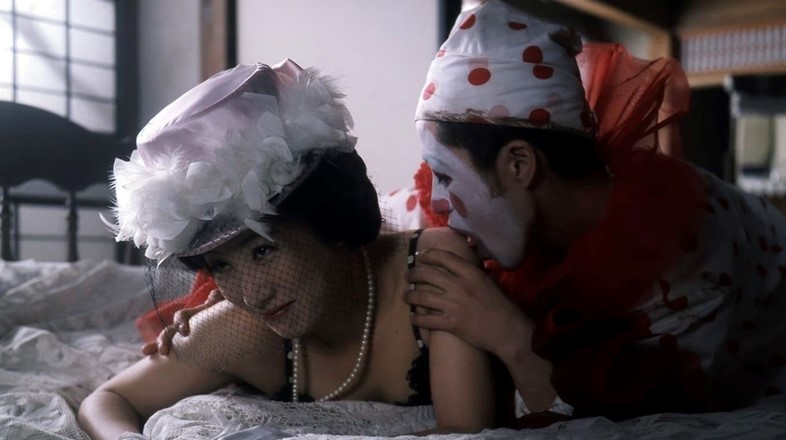
Roman Porno took influence from all kinds of subject matter. Classic European literature was raunchily reimagined for films like Lady Chatterley in Tokyo (1977). There were kinky pastiches of Seven Samurai and Dirty Harry. And real-life killer geisha Sada Abe – who, in 1936, strangled her lover and then severed his penis – inspired a sexually-amped box office hit in A Woman Called Sada Abe (1975).
The director of the latter was Noboru Tanaka, whose literary passions would lead him to the grotesque work of author Edogawa Ranpo. Ranpo, a famed mystery writer whose pen name was taken from The Raven author Edgar Allan Poe, would be the inspiration for all sorts of cult films in Japan across the years, including The Horrors of Malformed Men (Teruo Ishii, 1969) and Gemini (Shinya Tsukamoto, 1997). But the voyeuristic nature of The Watcher in the Attic fit the Roman Porno mould perfectly – and Tanaka wasn’t afraid to make his adaption as surreal as the source material demanded.
The film concerns the owner of a large manor house (Junko Miyashita) and her peeping tom tenant, played by Renji Ishibashi (Audition). From the attic space, amidst bizarre scenes of frog-eating and body-painting, he watches as a polka-dot-adorned clown performs fellatio on his veiled, well-dressed landlady – and soon decides he quite fancies her for himself.
WIFE TO BE SACRIFICED (MASARU KONUMA, 1974)
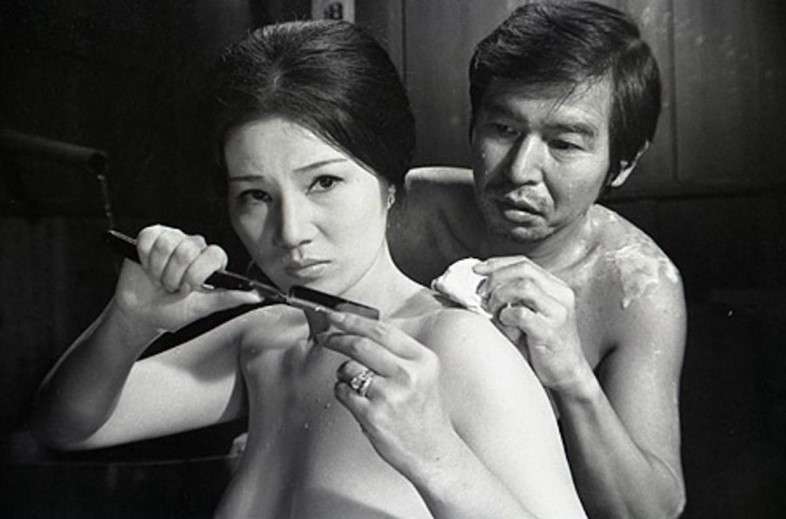
Until as recently as the mid-90s, strict censorship in Japan forbade even pubic hair from being visible in media of any kind in Japan, with airbrushing and crafty in-camera blocking providing two common solutions to the obstacle in Roman Porno film production. Nonetheless, with the rise of home video in the 80s, the floodgates were soon opened to a more intense and sleazy variety of adult-oriented media.
On the one hand, this led to gory genre-hybrids like Entrails of a Virgin (1986), which concerned a forest retreat where sexy teens are killed off by a demon with a giant penis. Elsewhere, deeply problematic sex-violence features like bus hijacking movie White Rose Campus: And Then Everyone Gets Raped (1982) were produced to satisfy extreme tastes.
Such questionable, boundary-pushing works can be traced back at least as far as Masaru Konuma titles like Wife to be Sacrificed (1974), which cemented the mainstream popularity of S&M cinema in Japan. In 1998, The San Francisco Chronicle praised the film, which concerns the kidnapping and sexual torture of a woman by her pervy ex (and which features a brief but very memorable shot of a human turd). “It’s like watching a sexual madhouse,” said critic Mick LaSalle
ANGEL GUTS: RED PORNO (TOSHIHARU IKEDA, 1981)

The lubed-up fourth entry in the Angel Guts series, titled Red Porno, begins with a woman indulging in an honest passion for soul-jazz – but it soon turns to bondage ropes and even boiled eggs as a means for self-pleasure, as department store worker Nami is duped into becoming an S&M magazine model.
Despite some uncomfortable scenes, the movie is noted for an absurdly high quality of cinematography even in its most benign moments, with handheld cameras chewing on crisp white duvets and city lights, while crash zooms, slow-mo and cross-fades provide a surprising level of technical finesse elsewhere.
Directors Company recruit Toshiharu Ikeda would win a top prize at the Yokohama Film Festival just a few years later for vengeance thriller Mermaid Legend, before reuniting with Angel Guts series writer Takashi Ishii to deliver the psychedelic cult horror film Evil Dead Trap in 1988.
LOVE HOTEL (SHINJI SOMAI, 1985)
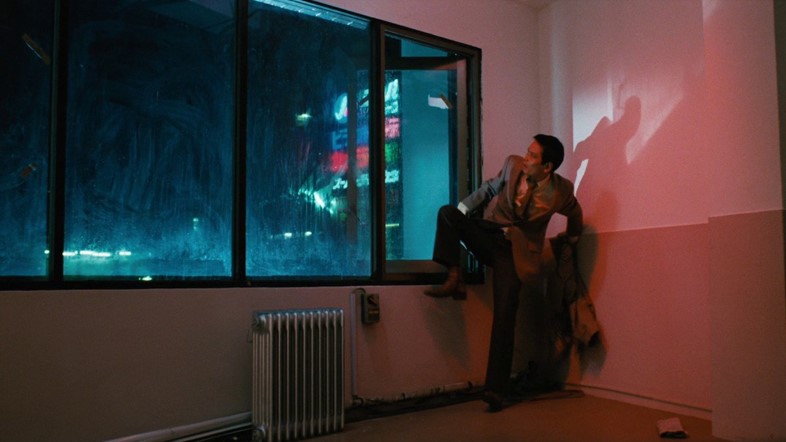
Even in its twilight years, Roman Porno served as a vital proving ground for emerging filmmakers.
Yōjirō Takita, the Oscar-winning director of 2008’s Departures, notably started with works like Time Adventure: 5 Seconds Till Climax (1986), which concerned a horny woman who travels to the future in search of sexual adventures. Meanwhile, Hideo Nakata, director of landmark J-horror hit Ring, cut his teeth working as an assistant for Masaru Konuma (Wife to be Sacrificed). Even famous figures from the art world got in on the act, with photographer Nobuyoshi Araki delivering High School Girl’s Diary in 1981.
Shinji Sōmai – the Berlin FIPRESCI prize-winning auteur behind classics like Typhoon Club and Moving – was another notable Roman Porno alumni. In 1985 he delivered one of the most visually stunning works of the genre, with recently-restored Love Hotel – expected for a UK re-release via Third Window Films in 2024 – elevated by hypnotic long takes, sumptuous neon lights, and meticulous shot composition. It won five awards at the Yokohama Film Festival upon release, including Best Film.
Years later, one of Sōmai’s most vocal fans would himself see the value in Roman Porno alumni: in 2020, director Ryusuke Hamaguchi chose Hidetoshi Shinomiya, the cinematographer for Roman Porno revival feature Wet Women in the Wind (2016), to shoot his Academy Award-winning breakthrough feature, Drive My Car.
HAND (DAIGO MATSUI, 2022)
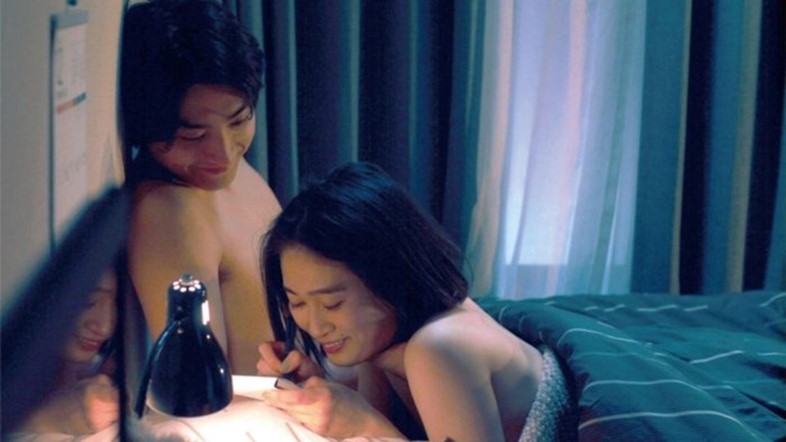
Produced to commemorate the 50th anniversary of Roman Porno, Hand was intended to promote the diversity and artistry of the genre in the present day – and as a result, it attracted significant attention from female cinema-goers in Japan. “I wanted to overcome the previously-held conception of the genre as ‘something for men’,” director Matsui tells Dazed. “I worked hard to make a film that women could enjoy.”
Adapting the work of award-winning gender-neutral author Nao-Cola Yamazaki, Hand tells the story of a 25-year-old office worker (Akari Fukunaga) who collects photos of middle-aged men before engaging in a relationship with a man her own age. It excels thanks to its earnest storytelling and strong dramatic performances, offering a sensuous approach to sex while also foregrounding the genre’s formal framework, with erotic scenes appearing almost exactly every ten minutes.
You can see it on the big screen in London at the ICA on February 6, before it slips off to other cities around the UK in the weeks thereafter.



